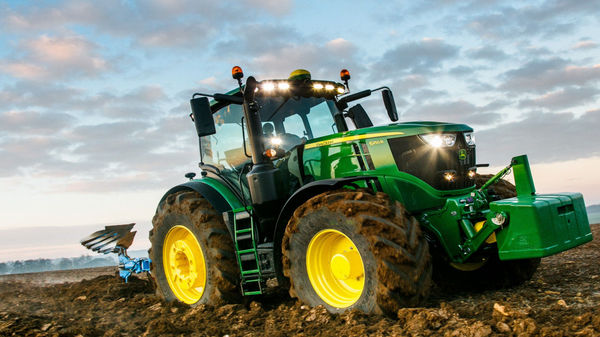100 years ago today, Deere & Company entered the tractor business. The biggest success story in the agricultural machinery industry started with the Waterloo Boy in the Midwest of the United States. Today John Deere is the world’s leading manufacturer of agricultural tractors, and the company produces ?intelligent’ tractors in 12 factories worldwide.
The $2.25 million acquisition of the Waterloo Gasoline Engine Company in Iowa in 1918 marked John Deere’s entry into the tractor business. This was a much debated and controversial investment at the time, as many critics did not believe in the future of tractors and continued to rely on the use of traditional horse power. Nobody expected that the tractor business would develop into the key foundation of the company’s growth.
The 27hp Waterloo Boy Model N (12hp at the drawbar), manufactured from 1917 to 1924, was the first tractor built and marketed by John Deere. The first John Deere branded, fully green and yellow production tractor was the Model D, built from 1923 to 1953. This became the longest production run of any farm tractor, helping to establish the company’s tractor success.
John Deere’s all-time bestseller was the Model B, with 300,000 sold from 1935 to 1953, while the 4020 became the most widely sold single model tractor, with a total of 175,000 produced from 1963 to 1971. John Deere became the tractor sales leader worldwide for the first time in 1963.
In 1956 John Deere bought the tractor manufacturer Heinrich Lanz, AG in Mannheim, Germany. With this acquisition the company expanded its manufacturing business into Europe for the first time. Lanz also had a long history in the tractor industry, introducing the popular Lanz Bulldog model in 1921.
In subsequent years John Deere continued to strengthen its position in the tractor business. After being the first company to offer power steering on tractors in 1954, another major milestone was the introduction of the ROPS (Roll-Over Protective Structure) as a safety feature in 1966, which set the standard for the entire industry. Initially available as an option in the early 1970s, the Sound-Gard body was the first dust-free, temperature controlled operator station, while the PowerShift transmission first introduced in 1964 provided John Deere tractors with better, more comfortable gear shifting and higher field productivity.
Today, the tractor is no longer just for pulling implements – instead, agricultural tractors, machines and implements can be effectively connected. For example, tractor implement automation enables a baler to ?talk’ to the tractor for automatic adjustment of functions such as forward speed, depending on the workload.
Mobile data transfer allows farmers to collect data from drilling to harvesting and send it automatically to the farm office. Field documentation displays data from the entire production chain and increases transparency for consumers. Farmers and contractors can use this data to make agronomic decisions on fertiliser and chemical applications, for example.
The story of John Deere’s 100 years of success and innovation, from the Waterloo Boy to today’s ?intelligent’ tractor, is being celebrated at the company’s worldwide tractor factories. Employees, their families and other guests have been invited to look behind the scenes of John Deere tractor production, and the Mannheim factory is holding a tractor parade through the city.
The John Deere Forum in Mannheim is featuring a display of vintage and classic tractors that have strongly influenced the company’s history, including an original Waterloo Boy, while the Forum’s shop is offering a variety of fan merchandise, such as a special edition 9RX tractor model, caps, shirts and mugs. Tractors ordered by customers this year will also carry a 100 years anniversary badge, and in addition dealers will have a range of special offers at favourable prices.
100 Years of John Deere Tractors
JOHN DEERE
